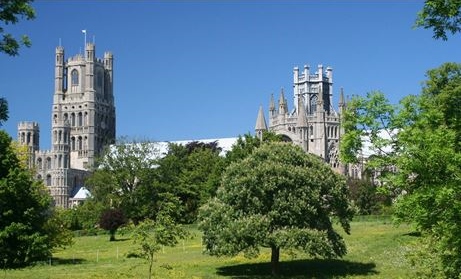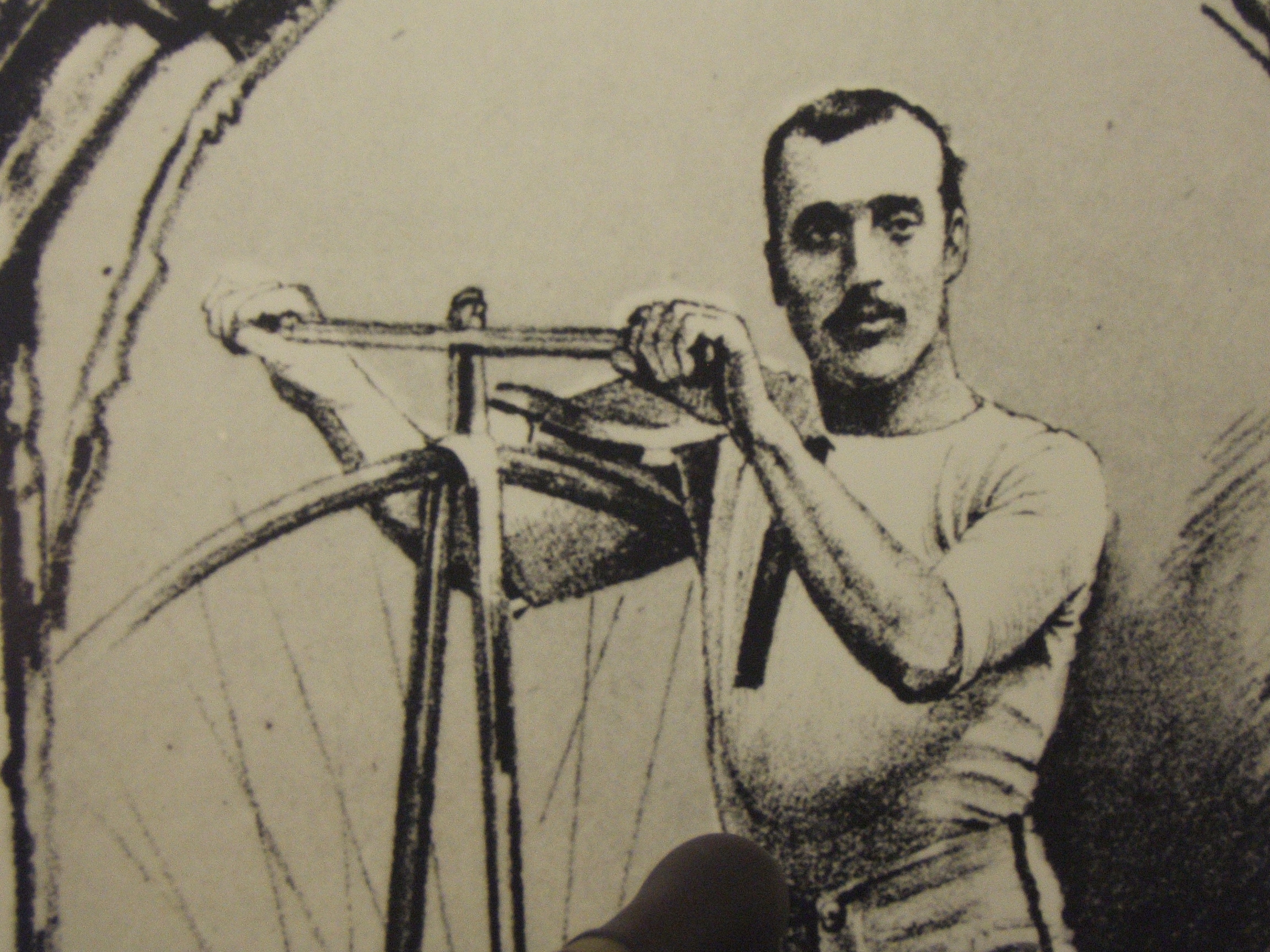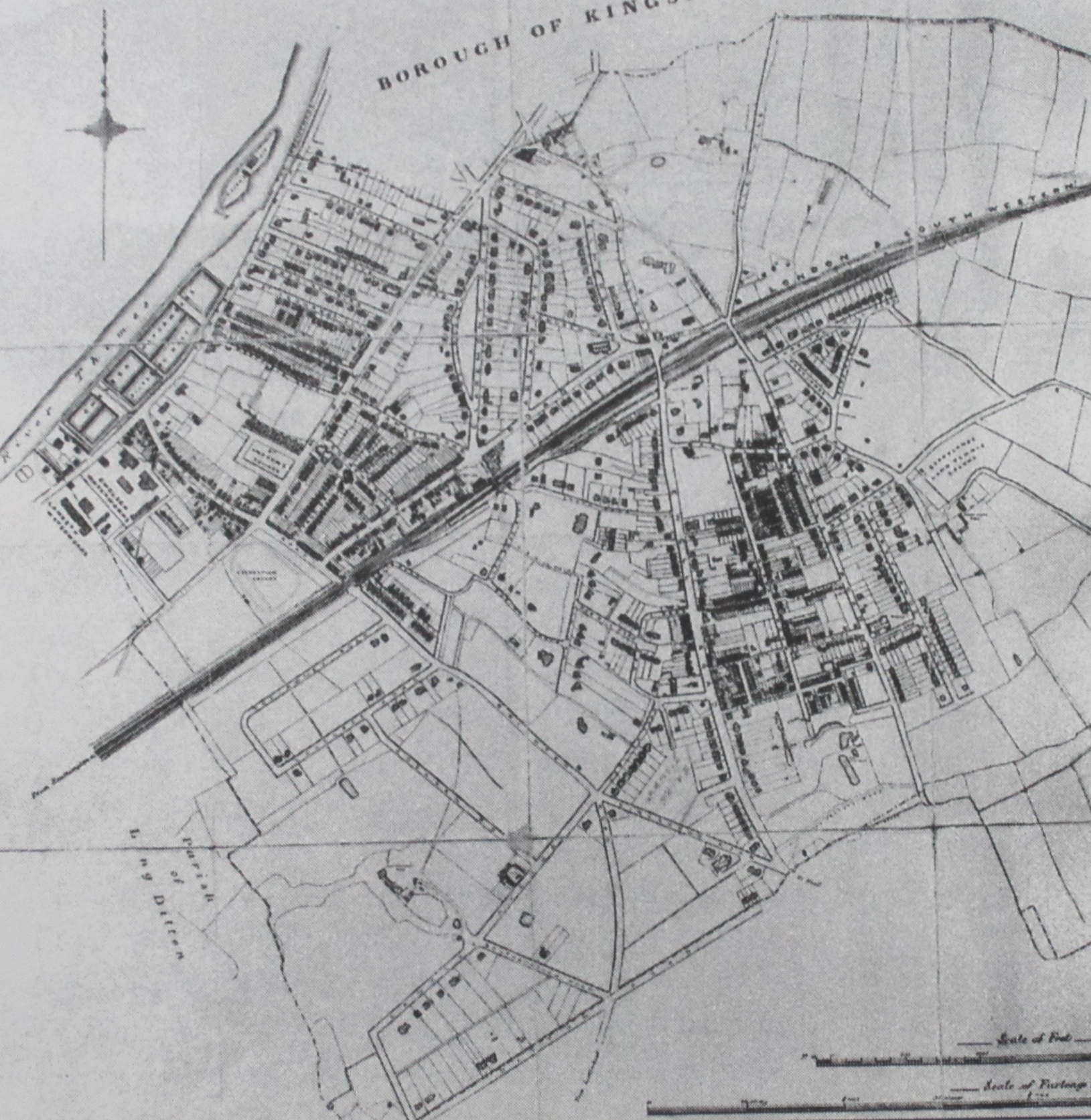Local
history
 |
Photo: Ely Cathedral
by June Francis.
|
Wikipedia article on John Keen.
When Barclays Bank moved out of 84 Victoria Road in Surbiton, the building was converted into a pub. For a while it was called the Denby Dale, but now (2017) it is The Surbiton Flyer. When I first noticed this name, I immediately recognized it, because some time earlier I had been told about a cycle-racing track, which had been at the far end of Victoria Road in the early days of cycle sport, and a Surbiton resident who was celebrated for his success there and earned the nickname The Surbiton Flyer. So you can imagine my disappointment that the pub sign did not show a man with a penny-farthing, but an early aeroplane. After a while a new sign appeared showing a locomotive speeding through Surbiton station. Now this is doubly wrong. The locomotive looks like an A4 Pacific, a type built for the LNER, not the Southern, and why would a train named after an apparent destination be passing straight through?
I thought I had better do a bit of research to see if I could find the name of the man who had been given the nickname. However, this was not at all easy. The pub's website gives no indication of the origin of its name and the various sites about pub names tend to confine themselves to the commoner ones and say little about specialized local ones. So I searched instead for a 19th-century cycle racer who might fit the bill. Well there was indeed a celebrated cyclist in Surbiton in the days of penny-farthings, but nowhere do I find him referred to as The Surbiton Flyer. Nevertheless, I think it is more likely than not that he is man I was told about. In any case, his story is well worth telling.
 |
|
Portrait of John Keen (public domain)
|
John Keen (1849-1902) was born in the village of Broadway in Worcestershire, but lived in Surbiton from the age of five.
As a young man he was fascinated with cycling and became both a manufacturer of bicycles and a professional sports cyclist.
When a racing track was opened in Surbiton, he won the first event held there. His career is described in some detail in the Wikipedia article on him. Further information is contained in an entry about him on the National Archives website.
The racing track caused me quite a bit of searching as well. I remembered that it was supposed to have been on the south-west side of Brighton Road, between Balaclava Road and the railway, before Victoria Avenue and Electric Parade were built. I found plenty of maps which showed Victoria Avenue, but as I looked earlier and earlier, the maps got thinner on the ground. There were some which just showed a couple of fields at that point, but the only one which goes any way to confirming the existence of the track is very indistinct. Such wording as there is in this vicinity is illegible, but there does appear to be a sports arena of some kind there. I am showing this map below for the sake of completeness, but it is disappointing that there is nothing clearer.
For those not familiar with this area, the track can be made out just north of the railway, to the west of the town centre.
 |
|
Map of Surbiton published in 1888 by Rowley Richardson and found by Richard Statham (public domain)
|
If you have a taste for solving mysteries, you might like to try the Crowthorne mystery.
Posted February 2017